ICE-HOCKEY
Legendary Ice Hockey Players: A Hall of Fame on Ice
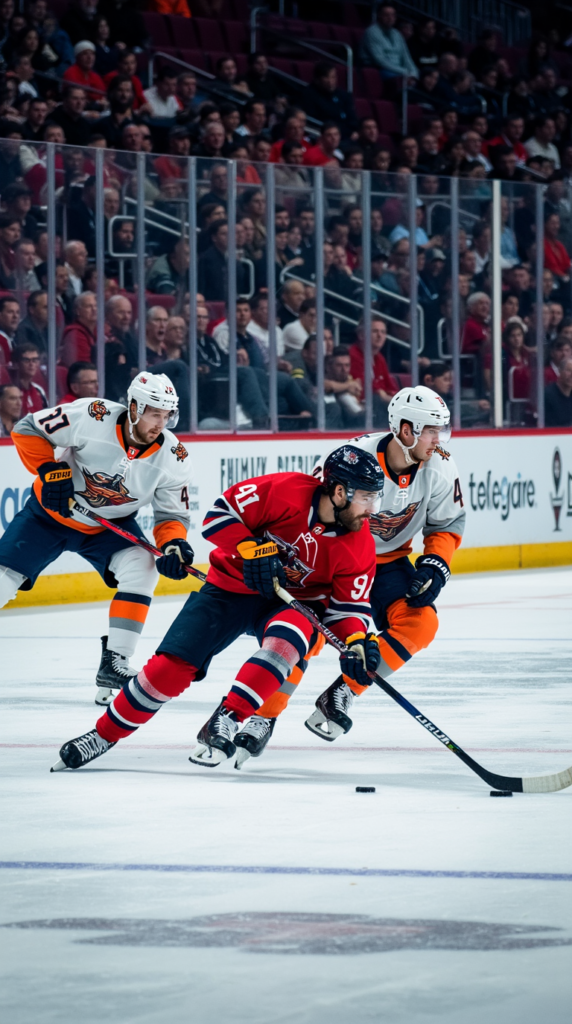
The history of ice hockey is paved with the brilliance of exceptional athletes, individuals who have not only mastered the game but have redefined it, leaving an indelible mark on the sport and inspiring generations. These are the legends, the icons, the players whose names echo through arenas and whose stories are whispered with reverence. Stepping onto the ice is like entering a pantheon of heroes, and in this section, we celebrate a few of the most luminous stars in hockey’s constellation – a Hall of Fame sculpted in ice.
While choosing a definitive «best» is always subjective and sparks endless debate, certain names consistently rise to the top, representing different eras and facets of hockey greatness. Here are just a few examples of players who embody legendary status:
Wayne Gretzky «The Great One»: Simply put, Wayne Gretzky is statistically untouchable and widely considered the greatest hockey player of all time. His offensive records are staggering and may never be broken. Gretzky possessed an unparalleled hockey IQ, vision, and puck-handling skills. He wasn’t just a scorer; he was a playmaker of genius, elevating the game of everyone around him. His impact on popularizing hockey in non-traditional markets, particularly in California with the Los Angeles Kings, is also significant.
Mario Lemieux «Super Mario»: A player of immense talent and grace, Mario Lemieux battled back from serious health issues to achieve extraordinary success. Blessed with size, skill, and incredible offensive instincts, Lemieux was a dominant force. He possessed a rare combination of power and finesse, capable of scoring highlight-reel goals and making breathtaking passes. His rivalry with Gretzky in the late 80s and early 90s captivated the hockey world. Lemieux’s ownership of the Pittsburgh Penguins and his role in saving the franchise adds another layer to his legendary story.
Bobby Orr «Number 4»: Bobby Orr revolutionized the defenseman position. Before Orr, defensemen were primarily focused on defense. Orr redefined the role, becoming an offensive force from the blue line. His speed, skating ability, and offensive creativity were unprecedented for a defenseman of his era. Orr’s impact on the game is immense, influencing generations of defensemen to be more involved in the attack. Despite a relatively short career due to knee injuries, his legacy as one of the greatest and most impactful players remains secure.
Sidney Crosby «Sid the Kid» / «The Next One»: Living up to immense hype from a young age, Sidney Crosby has delivered on every expectation. A generational talent, Crosby is known for his all-around game, leadership, and unwavering competitiveness. He’s a prolific scorer, an exceptional playmaker, and a strong two-way player. Crosby has led the Pittsburgh Penguins to multiple Stanley Cups and has been a consistent force at the highest levels of the game for over a decade. He represents the modern ideal of a complete hockey player.
Alexander Ovechkin «The Great Eight»: Alexander Ovechkin is the preeminent goal scorer of his generation and one of the greatest goal scorers in NHL history, chasing Gretzky’s all-time goal record. «Ovi» is known for his explosive shot, physicality, and passionate style of play. He’s a power forward in the truest sense, capable of dominating games with his scoring prowess and physical presence. Ovechkin has become synonymous with Washington Capitals hockey and has brought a Stanley Cup to the franchise.
The History of Ice Hockey: From its Origins to the Modern Era
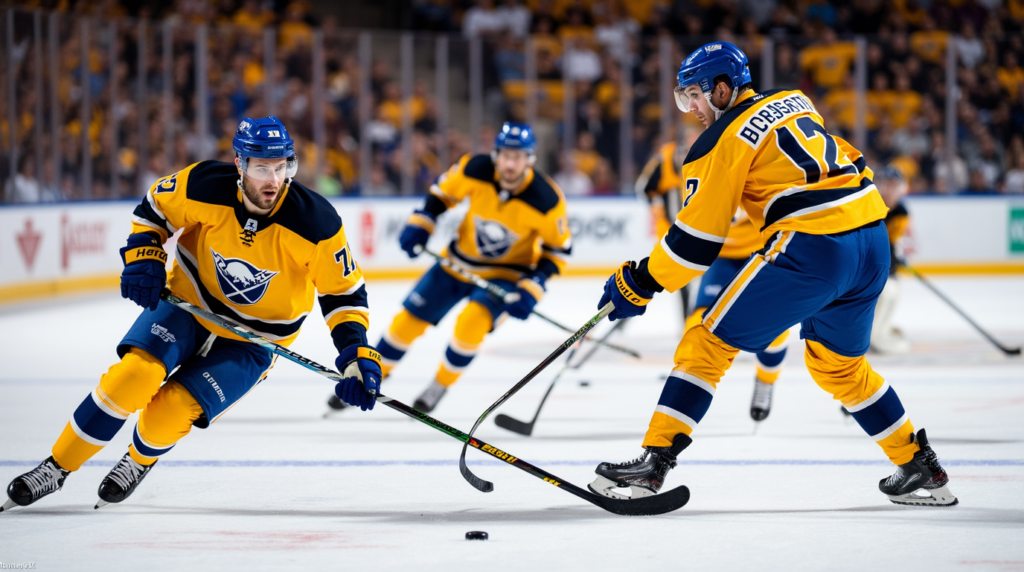
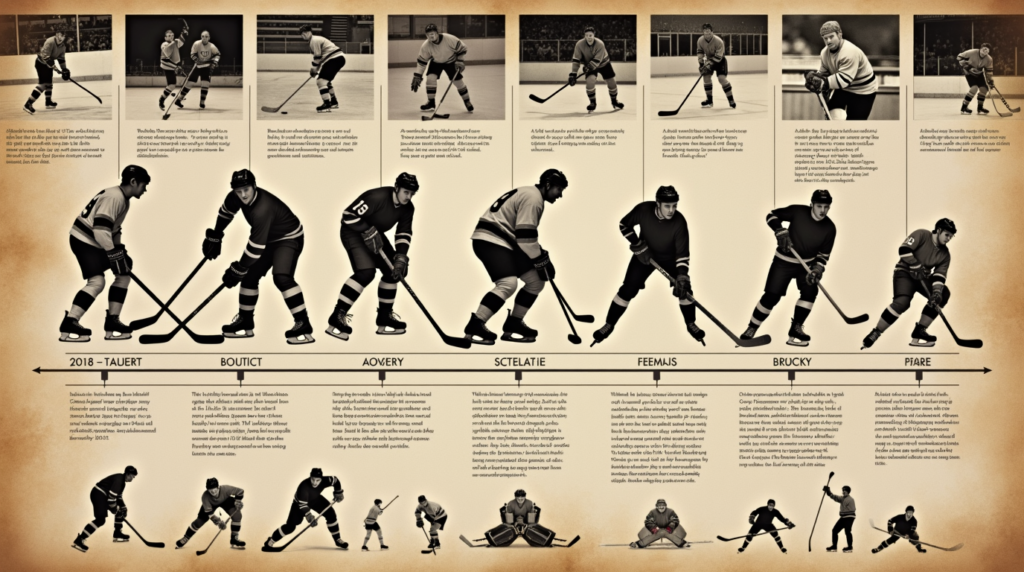
The story of ice hockey is a fascinating journey, tracing its roots from humble beginnings to its current status as a globally recognized and passionately followed sport. From informal games played on frozen ponds to the roaring arenas of the NHL, the evolution of ice hockey is a testament to its enduring appeal and adaptability. Let’s take a skate through time and explore the key milestones in the history of this exhilarating game.
Early Roots and Formative Years:
While the exact origins are debated, many historians point to stick-and-ball games played on ice in Europe, particularly in the Netherlands and Great Britain, as early as the 16th and 17th centuries. These early forms, often called «hurling» or «shinty» on ice, laid some groundwork for the development of hockey.
However, the generally accepted birthplace of modern ice hockey is Canada in the 19th century. Specifically, Montreal is often cited as the cradle of the sport. Around the mid-1800s, variations of field hockey and bandy were adapted to be played on ice rinks. James Creighton, often credited as a key figure in early hockey, formalized rules and organized games in Montreal in the 1870s, based on rules from field hockey and other stickball games.
First Organized Game: March 3, 1875, is often considered the date of the first organized indoor ice hockey game, played in Montreal at the Victoria Skating Rink.
The Halifax Rules (1877): Rules were further codified and refined, becoming known as the «Halifax Rules,» solidifying the foundation for modern hockey.
Amateur Hockey in Canada: Amateur leagues began to spring up in Canada in the late 19th century, with teams forming in universities, clubs, and cities.
The Rise of Professional Hockey and the NHL:
The early 20th century saw the emergence of professional ice hockey, driven by increasing popularity and the desire to compensate players.
Professional Leagues Emerge: Leagues like the International Professional Hockey League (IPHL) and the Eastern Canada Hockey Association (ECHA) were formed in the early 1900s, marking the beginning of professional hockey.
The National Hockey Association (NHA) (1909): A key precursor to the NHL, the NHA was formed in eastern Canada.
The National Hockey League (NHL) (1917): Out of disputes within the NHA, the National Hockey League was officially founded in 1917 in Montreal. Initially, it consisted of just a few teams in Canada.
Growth and Expansion of the NHL:
The NHL gradually grew in prominence and expanded, particularly after World War II.
Expansion to the United States: The NHL expanded into the United States in the 1920s, with teams like the Boston Bruins and New York Rangers.
«Original Six» Era: For several decades (roughly 1942-1967), the NHL consisted of only six teams: Montreal Canadiens, Toronto Maple Leafs, Boston Bruins, New York Rangers, Detroit Red Wings, and Chicago Blackhawks. This «Original Six» era is considered a golden age for many fans.
Major Expansion (1967 and Beyond): In 1967, the NHL doubled in size, adding six new expansion teams. Further expansions followed in the 1970s, 1990s, and 2000s, bringing NHL hockey to more cities across North America.
International Hockey and Global Reach:
Hockey’s appeal extended beyond North America.
International Ice Hockey Federation (IIHF) (1908): Founded to govern international hockey and organize tournaments.
Olympic Hockey: Ice hockey became a permanent sport at the Winter Olympics in 1924.
Soviet Hockey Dominance: During the Cold War era, Soviet (and later Russian) hockey teams were dominant in international competitions, showcasing a different style of play focused on team strategy and skill.
Global Expansion: Hockey has continued to grow globally, with strong leagues and passionate fan bases in Europe, particularly in Scandinavia, Russia, and the Czech Republic, and growing interest in other parts of the world.
Modern Era and Continued Evolution:
Today, ice hockey is a dynamic and evolving sport.
Rule Changes and Evolution of Play: Throughout its history, hockey rules have been modified to improve player safety, increase scoring, and enhance the flow of the game. The game has become faster, more skilled, and more strategically complex.
Technological Advancements: Technology has played a role in training, equipment, and game analysis.
Continued Global Growth: Efforts are ongoing to further expand hockey’s reach to new countries and markets.
From its humble Canadian origins to its global status, ice hockey has proven to be a resilient and captivating sport. Its history is filled with innovation, passion, and legendary figures, and its future promises continued excitement and growth on the world stage.
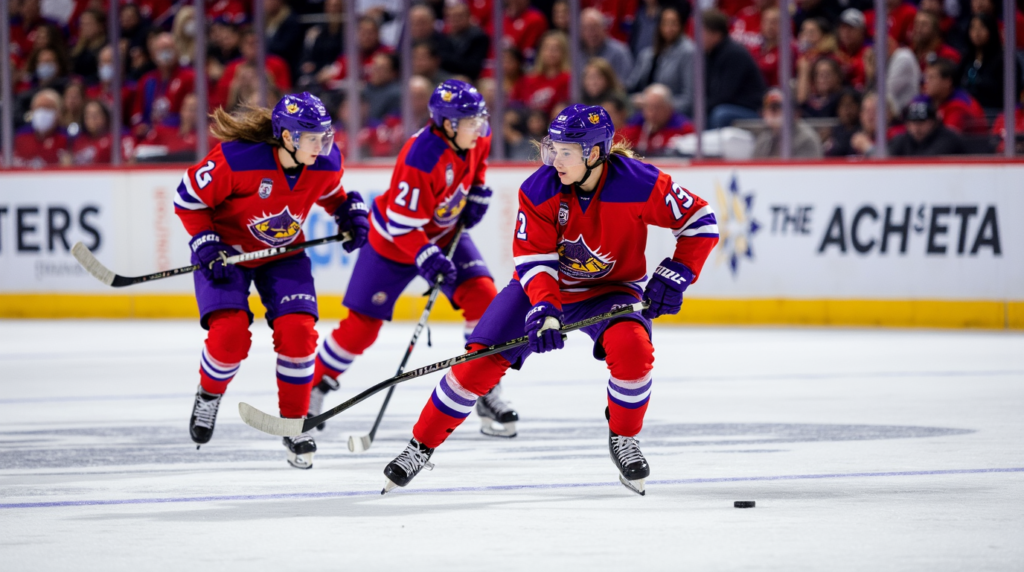
Women's Ice Hockey: Growing by Leaps and Bounds
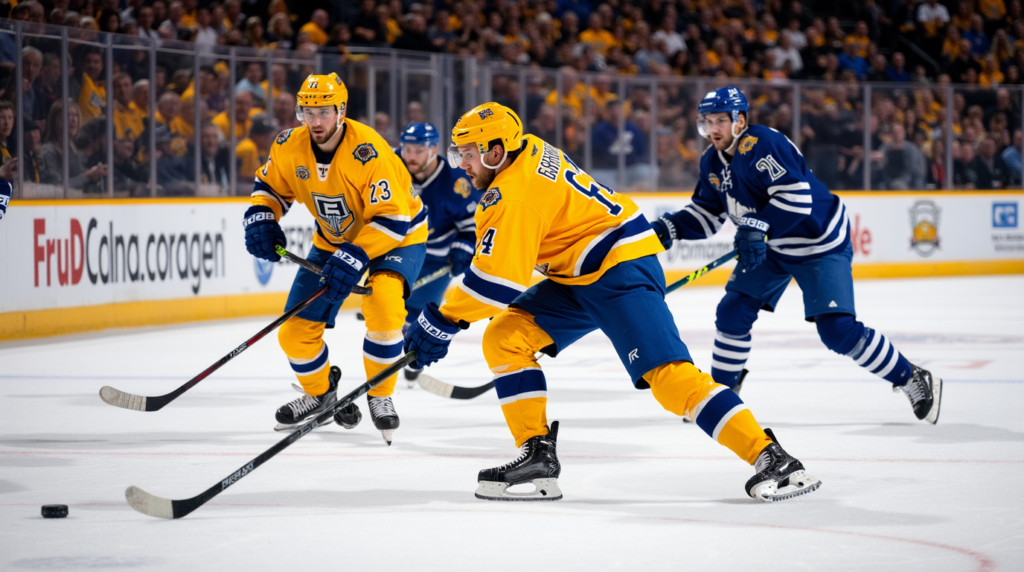
Positions in Ice Hockey: Roles and Responsibilities
For too long, the narrative of ice hockey has predominantly focused on the men’s game. However, a powerful and inspiring story of growth, resilience, and exceptional talent is unfolding in the world of women’s ice hockey. While facing historical challenges and fighting for recognition, women’s hockey is not just growing – it’s surging forward, carving its own path and captivating audiences with its skill, passion, and determination. It’s time to shine a spotlight on this dynamic and increasingly vital part of the hockey landscape.
Early Pioneers and Grassroots Growth:
Women have been playing hockey almost as long as the sport has existed in its organized form.
Late 19th Century Origins: Evidence suggests women were playing hockey in Canada as early as the late 1800s, often in informal settings and at universities.
Early Teams and Competitions: By the early 20th century, women’s hockey teams were forming and playing organized games, particularly in Canada.
Challenges and Limited Opportunities: Despite early enthusiasm, women’s hockey faced significant challenges in gaining mainstream recognition, funding, and consistent competitive opportunities compared to men’s hockey.
The Fight for Recognition and International Stage:
The latter half of the 20th century and the 21st century have seen a dedicated push for greater recognition and opportunities for women’s hockey.
IIHF Women’s World Championship (1990): A landmark moment, the first official IIHF Women’s World Championship was held in 1990, providing a crucial international stage for elite women’s hockey.
Olympic Inclusion (1998): Another monumental step was the inclusion of women’s ice hockey as a medal sport at the 1998 Winter Olympics in Nagano, Japan. This brought unprecedented visibility and legitimacy to the sport on a global scale.
Canada and USA Dominance: Historically, women’s international hockey has been dominated by Canada and the United States, with their national teams consistently vying for gold medals at World Championships and Olympics. This rivalry has become one of the most compelling in all of sports.
Professional and Semi-Professional Leagues:
The quest for professional and sustainable leagues for women’s hockey has been a long and ongoing journey.
Early Leagues and Challenges: Several leagues have emerged and faced challenges in sustainability, funding, and media coverage. Examples include the National Women’s Hockey League (NWHL) (later renamed the Premier Hockey Federation – PHF).
The Professional Women’s Hockey League (PWHL) (2023): A significant development, the PWHL launched in 2023, aiming to create a unified and stronger professional league in North America, backed by strong ownership and aiming for long-term viability. This is seen as a potential turning point for professional women’s hockey.
Growth at all Levels:
The growth of women’s hockey is not just at the elite professional level; it’s happening at grassroots levels around the world.
Increased Participation: More girls and women are playing hockey than ever before, with growing youth programs and collegiate leagues.
Expanding Global Reach: While North America has been a stronghold, women’s hockey is gaining traction in Europe, Asia, and other regions.
Rising Talent Pool: The skill level in women’s hockey is constantly improving, with athletes becoming faster, stronger, and more technically proficient.
Challenges and Future Opportunities:
Despite the progress, women’s hockey still faces challenges.
Pay Equity and Financial Sustainability: Professional women’s hockey leagues still lag behind men’s leagues in terms of player salaries, marketing budgets, and overall financial resources.
Media Coverage and Visibility: While improving, women’s hockey still receives significantly less media coverage than men’s hockey, hindering its growth in popularity and fan base.
Continued Advocacy and Support: Continued advocacy for equal opportunities, increased investment, and greater media exposure are crucial for the continued growth of women’s hockey.
A Bright Future:
Despite the challenges, the trajectory of women’s ice hockey is undeniably upward. The passion of the players, the growing talent pool, and the increasing momentum behind the sport point to a future where women’s hockey will continue to rise, gain greater recognition, and inspire athletes and fans worldwide. It’s a story of perseverance, skill, and the unwavering pursuit of a dream on ice.
Ice hockey is a team sport where each player has a crucial role to play. Understanding the different positions and their specific responsibilities is key to appreciating the strategy and flow of the game. On the ice, you’ll typically see six players per team: five skaters and one goalie. Let’s break down the primary positions and what each player is expected to do:
1. Forwards: The Offensive Force
Forwards are primarily responsible for generating offense, scoring goals, and creating scoring chances. There are typically three forward positions on the ice at any given time:
Center (C): Often considered the quarterback of the team, the center is a pivotal position.
Responsibilities:
Offensive Leader: Often leads the offensive attack, involved in puck possession and playmaking.
Face-offs: Typically takes face-offs for their team.
Two-Way Play: Expected to contribute defensively as well, backchecking and supporting the defense.
Connecting Link: Acts as a link between the defense and the wings, distributing the puck and setting up plays.
Key Skills: Skating, puck handling, passing, hockey IQ, face-off ability, two-way awareness.
Wingers (Left Wing – LW & Right Wing – RW): Positioned on the sides of the center, wingers are crucial for both offense and supporting the defense.
Responsibilities:
Scoring: Expected to contribute to goal scoring, often by driving to the net, taking shots from the wing, and capitalizing on rebounds.
Supporting the Center: Work with the center to create offensive plays, provide passing options, and create space.
Defensive Support: Backcheck to help the defensemen in their own zone, and cover their defensive side of the ice.
Cycle Game: Often involved in puck possession along the boards in the offensive zone (the «cycle»).
Key Skills: Skating speed, puck handling, shooting, passing, ability to play along the boards, defensive awareness.
2. Defensemen (Defense – D): The Defensive Backbone
Defensemen are primarily responsible for preventing the opposing team from scoring and transitioning the puck from the defensive zone to the offensive zone. There are typically two defensemen on the ice.
Responsibilities:
* Defensive Zone Coverage: Protecting their own net, breaking up opposing attacks, blocking shots, and clearing the puck out of the defensive zone.
* Physical Play: Often involved in physical play, including body checking (legally separating opponents from the puck).
* Puck Movement: Starting the breakout from the defensive zone, making outlet passes to forwards, and carrying the puck up ice when appropriate.
* Offensive Contributions (Increasingly Important): Modern defensemen are expected to contribute offensively by joining the rush, taking shots from the point (blue line), and quarterbacking the power play.Key Skills: Skating (including backwards skating), defensive positioning, checking, shot blocking, passing, puck handling, increasingly – offensive skills and shot power.
3. Goalie (Goaltender – G or GK): The Last Line of Defense
The goalie is the most specialized position in hockey, and arguably the most crucial. The goalie’s sole job is to prevent the puck from entering the net.
Responsibilities:
* Stopping Shots: Using their body, pads, gloves, and stick to make saves and prevent goals.
* Controlling Rebounds: Directing rebounds away from dangerous areas to prevent second scoring chances.
* Puck Handling (Increasingly Common): Some goalies are skilled at playing the puck with their stick outside of the net, helping their team break out of the defensive zone.
* Communication: Communicating with defensemen to coordinate defensive coverage.
* Mental Fortitude: Goalies need to be mentally strong and resilient, as they face immense pressure and can be the difference between winning and losing.Key Skills: Reflexes, agility, positioning, glove hand, blocker hand, pad saves, puck tracking, mental toughness, increasingly – puck handling.
Specialization and Teamwork:
While these are the general roles, within each position, there can be further specialization. For example, some defensemen are more offensively oriented («offensive defensemen») while others are more defensively focused («stay-at-home defensemen»). Similarly, some forwards are known for their scoring touch, while others are more grinders or playmakers.
Ultimately, success in hockey relies on all positions working together as a cohesive unit. Forwards need to backcheck and support the defense, defensemen need to contribute to the offense, and the goalie needs to be a reliable last line of defense. Understanding these roles will deepen your appreciation for the intricate teamwork and strategic nuances of ice hockey.